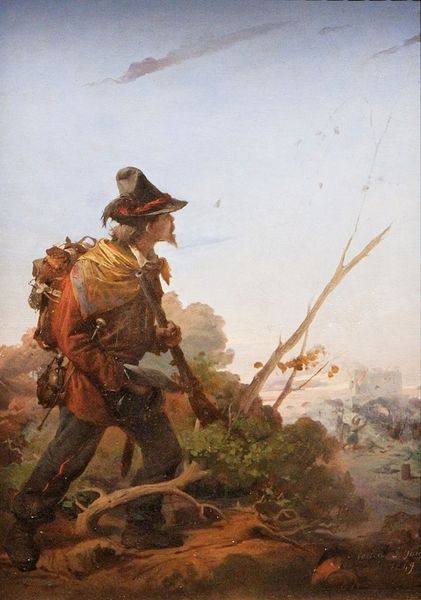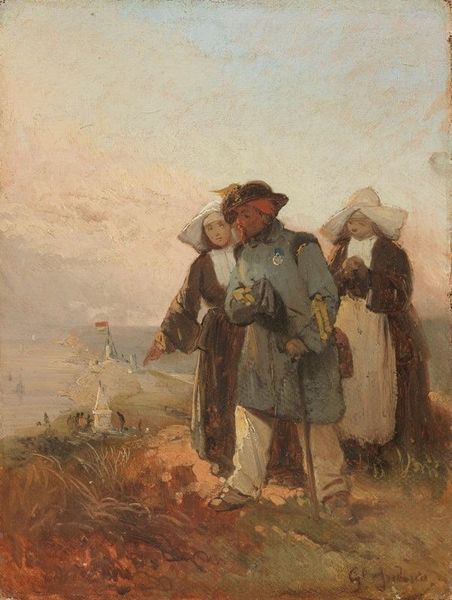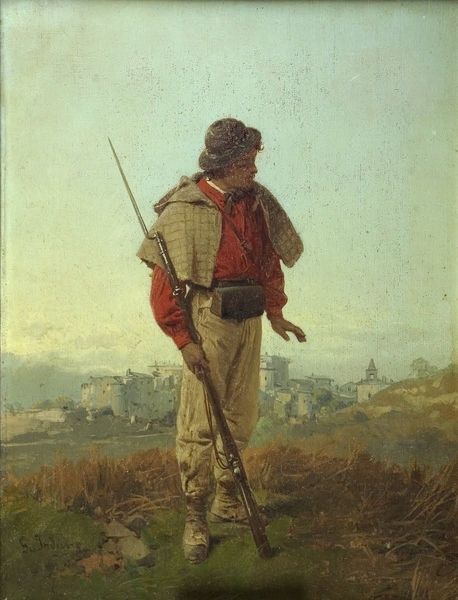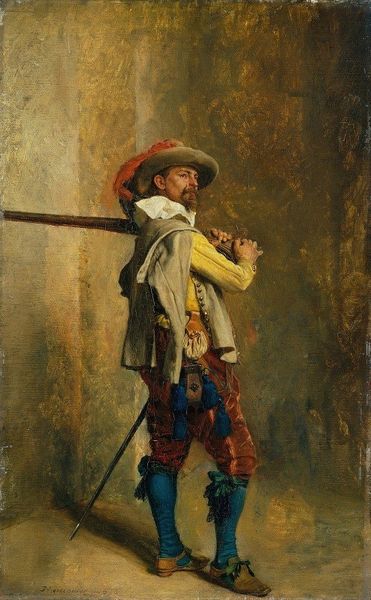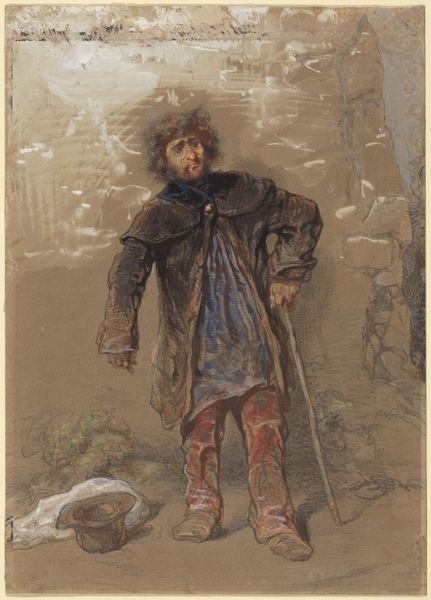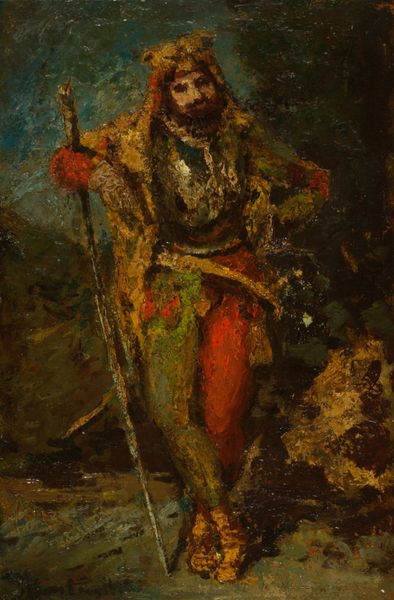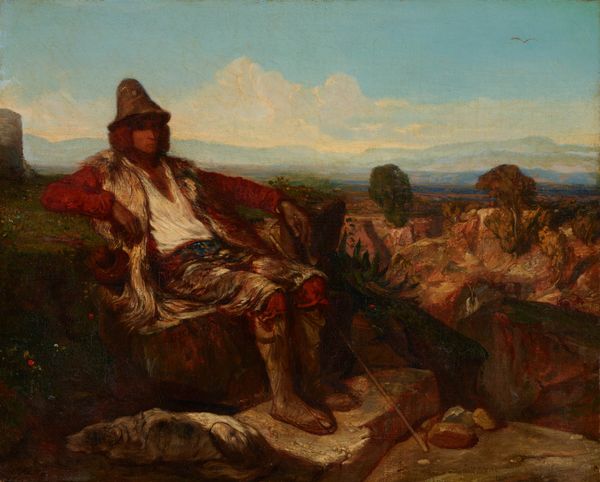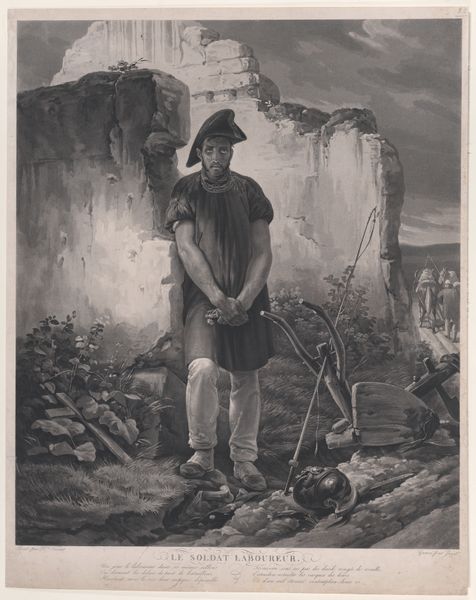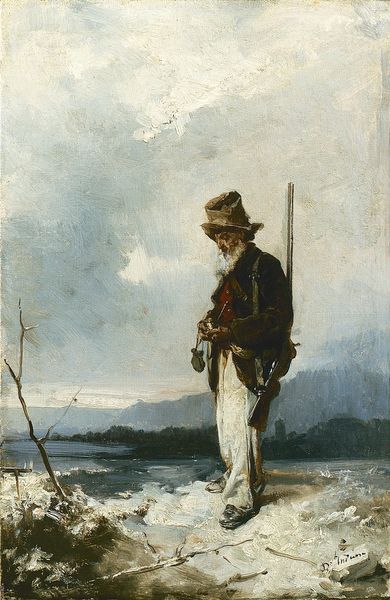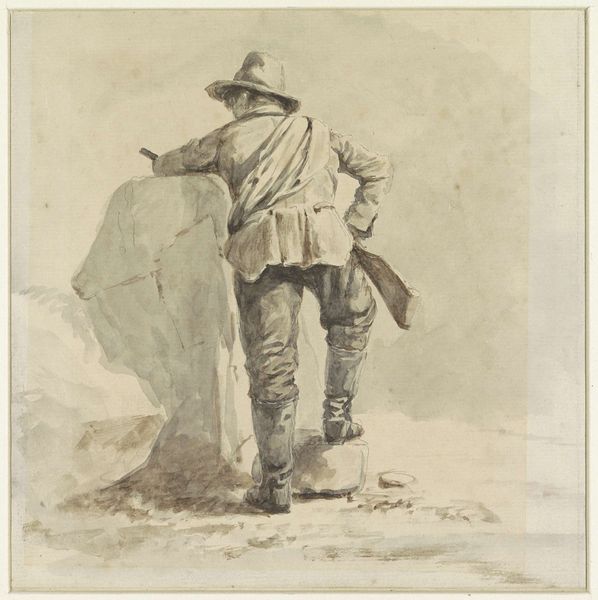
#
acrylic
#
abstract painting
#
painted
#
possibly oil pastel
#
oil painting
#
neo expressionist
#
acrylic on canvas
#
underpainting
#
soldier
#
painting painterly
#
italy
#
watercolor
Dimensions: 40 x 28 cm
Copyright: Public domain
Curator: Gerolamo Induno painted "The Sentry" in 1851. I'm drawn to its use of oil to depict a quiet moment within a potentially volatile setting. What are your initial impressions? Editor: It feels contemplative, almost melancholic. The soft, diffused light combined with the soldier’s stance creates a sense of weary vigilance. I immediately think about the psychological burden of conflict. Curator: Exactly. The artist uses a limited palette dominated by earth tones, which lends itself to a sense of realism but also highlights the symbolic weight of the figure. Consider his placement on a small rise; it reminds me of the ancient Roman tradition of raising war heroes to positions of prominence. The figure’s gaze looks towards the front as a symbolic beacon. Editor: But who is he protecting? Is it simply a symbol of patriotic fervor or a commentary on the lived reality of soldiers from a working-class background swept into political agendas beyond their control? Looking at the flag in the background gives a better grasp of the era and historical climate; it brings the reality of revolution into play. Curator: Well, the imagery of the smoking pipe also stands out. Historically, tobacco symbolizes contemplation, peace. Perhaps this man seeks comfort in tobacco while bearing witness to or enacting the reality of conflict, in his historical Italian context. Editor: Absolutely, it’s an interesting paradox—that of finding individual solace amidst collective violence. It encourages us to see these figures as complex individuals rather than faceless combatants of war. And his uniform; the details suggest some level of authority and make us ponder military structure. Curator: And, given its creation in 1851, during the turbulent years of the Risorgimento, it inevitably evokes the push for a unified Italian nation. The sentry could thus become a visual representation of those aspirations. Editor: So it moves between quiet personal contemplation and national historical action. Viewing "The Sentry" this way really connects the personal cost of national and political aspiration. Curator: Ultimately, Induno's ability to humanize such figures offers a lasting invitation to empathy and critical thought. Editor: Agreed; placing it in this perspective gives contemporary audiences new interpretive routes through issues of class, conflict, and sacrifice that we can engage with.
Comments
No comments
Be the first to comment and join the conversation on the ultimate creative platform.
